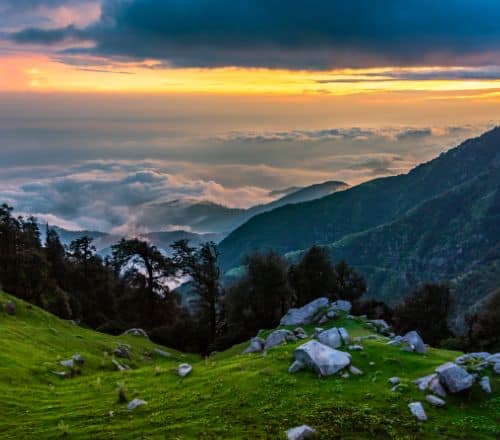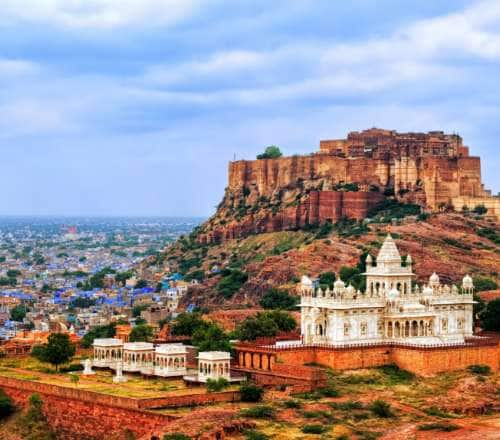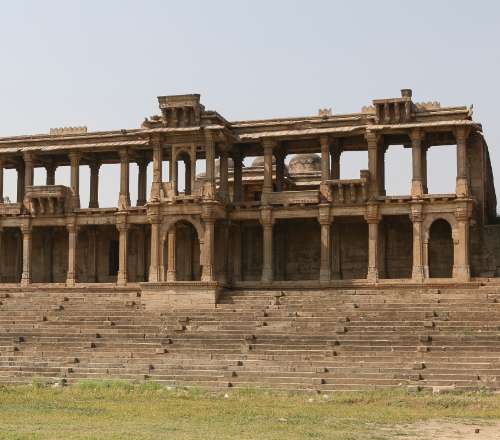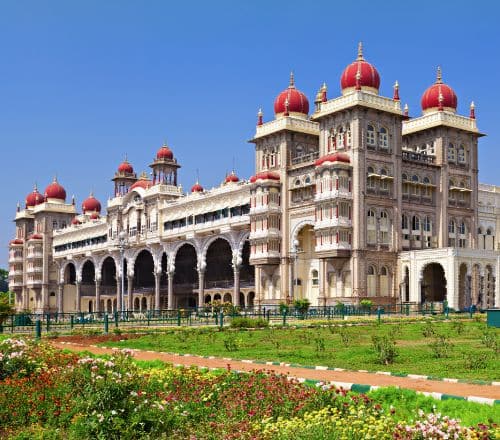Stay logged in to proceed with bookings, orders and offers.
On changing the terminal, you will loose items in your cart. Are you sure you want to change your terminal?
A story about the indigenous tattoo-making tradition of Godana
"How does it feel? Does it hurt?' The girl looked over my shoulder while I was being inked. I wasn’t getting a fashionable tattoo with modern equipment. Instead, I was being pricked ceaselessly by a villager with a needle. This is known as the art of Godana. "
Read More
Read Less
My employer who had rejected the sponsorship of the trip to meet the Baigas asked me to visit Chhattisgarh. I was a media delegate to the National Tribal Dance Festival organised by the state government. My job was to cover the event for social media posts and a PR piece. I found a Godana tattoo artist during this festival.
There was a section on the fairgrounds representing the Baiga culture and their way of life. A stall here offered Godana. However, there was no one in the stall. I hoped to find someone there the next day. Sure enough, there was a young man at the stall busy tattooing younger folks with a modern machine. I noticed a middle-aged man sitting there with his needle before I turned away disheartened. I asked him if he did Godana. He was elated that I asked.
He prepared his vegetable soot ink and began stabbing my wrist with a self-made needle. I am not afraid of injections and it wasn't painful. I was concerned about the hygiene though. He asked me to keep the Godana covered for an hour and then apply turmeric to it. I followed his instructions and had no skin issues.
The Godana artist, Parasthit, refused to accept any money when I offered to pay him. He was happy I was interested in his obscure art. Most people have lost interest in Godana or are afraid to do it. I made him happy by trusting him.
Parasthit didn’t know that he had made me happy by restoring my faith in the complex ways the universe chooses to help us. I had lost an opportunity to travel to Chhattisgarh but I found it again without even trying. Similarly, I had lost hope of finding a Godana artist in the tribal belt. However, I found one at an international event organised by the state.
The tribal art of Godana and the various names by which we call its different forms and techniques are being revived. People with tribal face tattoos often find it difficult to find jobs. It is heartening to see that countries like New Zealand are now open to employing people with tribal face tattoos. I would love to see our dying art and culture revived with social and legal support. After all, these are valuable assets we inherited from our ancestors!
Jump back three years to a time when this trip was a possibility! I was a writer with a travel start-up. The content manager there made an offer we simply couldn't refuse. The writers were to pitch travel story ideas. The first three winning pitches would be sponsored partially by the organisation. What was I going to pitch?
Baiga Godana was on my mind when I pitched the travel story idea. Tattooing may be gaining popularity among the youth, but the art of Godana is slowly slipping into oblivion. The younger generations of the Baiga people are moving away from Godana. Unlike modern tattoos, Godana isn’t commercially viable.
I proposed a trip to Chhattisgarh to interact with the Baigas and get a Godana for myself. My pitch was accepted as the winning story. Unfortunately, the sponsorship didn't work out and the trip was soon forgotten. However, getting a Godana was always on my mind.
I had heard about the Baiga tribe during my stay in Chhattisgarh. They are known for their tattoos, primarily adorned by the women of the tribe and were an essential part of their culture. At different ages, the members of the tribe were to get a Godana marking the completion of the current stage in life and the onset of the next. Some tribals believe that these tattoos are required to pass the doorways of heaven. This local belief reminded me of the first-ever Godana I had seen.
My grandmother had a small flower inked on her wrist. It was greenish and wasn't drawn on top of her skin. I was six years old and this intrigued me. My grandmother or nani, as I call her, told me that was called Godana. I hadn't heard about tattoos then. It was still the 90s and contemporary tattoos would have to wait for the millennium to get popular in India.
My nani told me more interesting things about Godana. She had seen many women from her times get their husbands’ names inked on their wrists. These women were teenagers and usually illiterate. Traditionally, women were not supposed to take the names of their husbands. It was believed that doing so would reduce the life span of their husbands. A Godana was useful in such circumstances. It helped them find their husbands if they were away or got lost at village fairs. In addition to this practical use of Godana, my nani also emphasised the permanence of its nature.
She told me, 'You may die but the Godana never leaves you. It’s on your skin even after your body is burnt on your funeral pyre.' My nani didn’t know the Baigas or anything about their belief system. However, the core philosophy of getting a Baiga Godana is its permanence. This is what made the tribals champion it. A mark that is still your identification even after your skin is burnt. The tribals believe that the Godana percolates into our souls. When the faceless souls stand at the gates of heaven, they still carry the marks of their Godana. It may even help them reunite with their husbands in the afterlife.
The Baigas are an indigenous ethnic group. They are mainly found in the central Indian states of Madhya Pradesh and Chhattisgarh. The Baigas are one of the largest tribes in India and are known for their traditional ways of living and their close connection to nature. They practice slash-and-burn agriculture and have a rich cultural heritage that includes folk songs, dances and rituals.
Baiga tribal tattoo or Godana is a type of body art traditionally practised by the Baiga tribe in India. The tattoos hold cultural and spiritual significance for the Baiga people. They are used as a form of identity, protection, and decoration. The tattoos are usually applied manually using a needle and organic ink. The process of inking is considered a rite of passage into adulthood.
Baiga tattoos are unique in design. They often feature intricate geometric patterns and animal figures such as tigers, snakes and elephants. The tattoos are passed down from one generation to another. They have preserved the Baiga tribe's rich heritage and cultural traditions.
I moved to Purulia in the Chhotanagpur region two years after proposing a trip to Chattisgarh to meet the Baiga tribe. The region is populated by tribals and many of them carry Godana on their bodies. I tried to find a Godana artist in Purulia. I was told that I might spot one at the village fairs. However, I was not successful in my quest. I was unable to get a Godana during my stay. My luck was going to change soon!





The Adani One expressly disclaims all liability, direct and indirect, in respect to actions taken or not taken based on any or all the contents of this Blog. The Blog is an opinion of the contributor based on the collation of data from various sources and is provided only for information purpose. Adani One does not canvass, advertise, solicit, invite or induct for any product, merchandise, information, brand or any other materials mentioned in the Blog, nor does it obtain any monetary benefit from the same. Reader is advised to read and apply his/her intellect and discretion in this regard. Any Intellectual Property mentioned in this blog belongs to the rightful owner. We do not intent to claim any interest over the same.